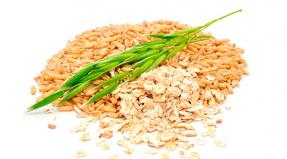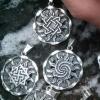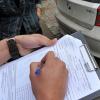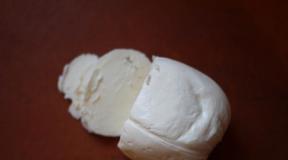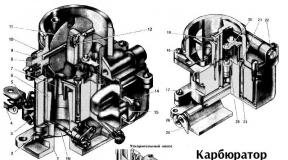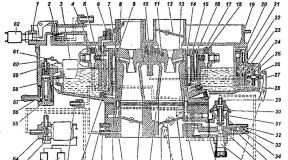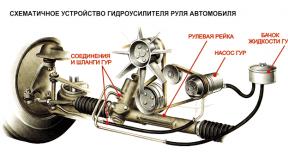What is the reason for the violation of the heart rhythm. Causes and symptoms of heart rhythm disturbances. What symptoms may indicate the presence of arrhythmia
Cardiac arrhythmias (arrhythmias) are one of the most difficult areas of clinical cardiology. This is partly due to the fact that a very good knowledge of electrocardiography is required for the diagnosis and treatment of arrhythmias, partly - a huge variety of arrhythmias and a large selection of treatments. In addition, with sudden arrhythmias, urgent medical measures are often required.
Age is one of the main factors that increase the risk of arrhythmias. So, for example, atrial fibrillation is detected in 0.4% of people, while the majority of patients are people over 60 years old. The increase in the incidence of heart rhythm disturbances with age is explained by changes that occur in the myocardium and the cardiac conduction system during aging. Replacement of myocytes with fibrous tissue occurs, so-called "sclerodegenerative" changes develop. In addition, with age, the incidence of cardiovascular and extracardiac diseases increases, which also increases the likelihood of arrhythmias.
The main clinical forms of cardiac arrhythmias
- Extrasystole.
- Tachyarrhythmias (tachycardias).
- Supraventricular.
- Ventricular.
- Sick sinus syndrome.
- Violations of atrioventricular and intraventricular conduction.
According to the nature of the clinical course, heart rhythm disturbances can be acute and chronic, transient and permanent. To characterize the clinical course of tachyarrhythmias, such definitions as "paroxysmal", "recurrent", "continuously recurrent" are used.
Treatment of cardiac arrhythmias
Indications for the treatment of rhythm disturbances are pronounced hemodynamic disturbances or subjective arrhythmia intolerance. Safe, asymptomatic or low-symptom easily tolerated arrhythmias do not require special treatment. In these cases, the main therapeutic measure is rational psychotherapy. In all cases, first of all, the underlying disease is treated.
Antiarrhythmic drugs
The main method of treating arrhythmias is the use of antiarrhythmic drugs. Although antiarrhythmic drugs cannot "cure" arrhythmias, they help reduce or suppress arrhythmic activity and prevent recurrence of arrhythmias.
Any exposure to antiarrhythmic drugs can cause both antiarrhythmic and arrhythmogenic effects (that is, on the contrary, contribute to the onset or development of arrhythmias). The probability of manifestation of an antiarrhythmic effect for most drugs is on average 40-60% (and very rarely for some drugs with certain types of arrhythmia reaches 90%). The likelihood of developing an arrhythmogenic effect averages about 10%, while life-threatening arrhythmias can occur. In the course of several large clinical studies, a noticeable increase in overall mortality and the incidence of sudden death (2 - 3 times or more) among patients with organic heart disease (postinfarction cardiosclerosis, hypertrophy or dilatation of the heart) was found while taking class I antiarrhythmic drugs, despite the fact that these funds effectively eliminated arrhythmias.
According to the most common classification of antiarrhythmic drugs by Vaughan Williams today, all antiarrhythmic drugs are divided into 4 classes:
Class I - sodium channel blockers.
Class II - beta-adrenergic receptor blockers.
III class - drugs that increase the duration of the action potential and the refractoriness of the myocardium.
IV class - calcium channel blockers.
The use of combinations of antiarrhythmic drugs in some cases makes it possible to achieve a significant increase in the effectiveness of antiarrhythmic therapy. At the same time, there is a decrease in the frequency and severity of side effects due to the fact that drugs in combination therapy are prescribed in lower doses.
It should be noted that there are no indications for the appointment of so-called metabolic drugs to patients with rhythm disturbances. The effectiveness of a course of treatment with drugs such as cocarboxylase, ATP, inosie-F, riboxin, neoton, etc., and placebo are the same. The exception is mildronate, a cytoprotective drug, there is evidence of the antiarrhythmic effect of mildronate in ventricular extrasystole.
Features of the treatment of the main clinical forms of rhythm disturbances
Extrasystole
The clinical significance of extrasystole is almost entirely determined by the nature of the underlying disease, the degree of organic damage to the heart and the functional state of the myocardium. In persons without signs of myocardial damage with normal contractile function of the left ventricle (ejection fraction greater than 50%), the presence of extrasystole does not affect the prognosis and does not pose a threat to life. In patients with organic damage to the myocardium, for example, with postinfarction cardiosclerosis, extrasystole may be considered as an additional prognostically unfavorable sign. However, the independent predictive value of extrasystole has not been determined. Extrasystole (including extrasystole of "high gradation") is even called "cosmetic" arrhythmia, thus emphasizing its safety.

As noted, treating extrasystole with class I C antiarrhythmic drugs significantly increases the risk of death. Therefore, if indicated, treatment begins with the appointment of β-blockers. In the future, the effectiveness of therapy with amiodarone and sotalol is evaluated. The use of sedatives is also possible. Class I C antiarrhythmic drugs are used only with very frequent extrasystoles, in the absence of the effect of therapy with β-blockers, as well as amidorone and sotalol (Table 3)
Tachyarrhythmias
Depending on the localization of the source of arrhythmia, supraventricular and ventricular tachyarrhythmias are distinguished. By the nature of the clinical course, there are 2 extreme variants of tachyarrhythmias (permanent and paroxysmal. Transient or recurrent tachyarrhythmias occupy an intermediate position. Atrial fibrillation is most often observed. The frequency of atrial fibrillation increases dramatically with the age of patients.
Atrial fibrillation
Paroxysmal atrial fibrillation.During the first day, 50% of patients with paroxysmal atrial fibrillation show spontaneous restoration of sinus rhythm. However, whether the restoration of sinus rhythm will occur in the first hours remains unknown. Therefore, with early treatment of the patient, as a rule, attempts are made to restore sinus rhythm with the help of antiarrhythmic drugs. In recent years, the algorithm for the treatment of atrial fibrillation has become somewhat more complicated. If more than 2 days have passed since the onset of the attack, the restoration of the normal rhythm can be dangerous - the risk of thromboembolism is increased (most often in the vessels of the brain with the development of a stroke). In non-rheumatic atrial fibrillation, the risk of thromboembolism ranges from 1 to 5% (average about 2%). Therefore, if atrial fibrillation continues for more than 2 days, it is necessary to stop attempts to restore the rhythm and prescribe the patient indirect anticoagulants (warfarin or phenylin) for 3 weeks at doses that maintain the international normalized ratio (INR) in the range from 2 to 3 (prothrombin index about 60 %). After 3 weeks, an attempt can be made to restore sinus rhythm with medical or electrical cardioversion. After cardioversion, the patient should continue taking anticoagulants for another month.
Thus, attempts to restore sinus rhythm are made within the first 2 days after the development of atrial fibrillation or 3 weeks after the start of anticoagulant administration. In the tachysystolic form, you should first reduce the heart rate (convert to normosystolic form) using drugs that block conduction in the atrioventricular node: verapamil, β-blockers or digoxin.
The following drugs are most effective to restore sinus rhythm:
- amiodarone - 300-450 mg IV or a single oral administration at a dose of 30 mg / kg;
- propafenone - 70 mg IV or 600 mg orally;
- novocainamide - 1 g IV or 2 g inside;
- quinidine - 0.4 g inside, then 0.2 g every 1 hour before stopping (max. dose - 1.4 g).
Today, in order to restore sinus rhythm in atrial fibrillation, a single dose of oral amiodarone or propafenone is increasingly prescribed. These drugs are highly effective, well tolerated and easy to take. The average recovery time of sinus rhythm after taking amiodarone (30 mg / kg) is 6 hours, after propafenone (600 mg) - 2 hours.
In case of atrial flutter, in addition to drug treatment, transesophageal stimulation of the left atrium can be used with a frequency exceeding the frequency of atrial flutter - usually about 350 pulses per minute, lasting 15-30 seconds. In addition, in atrial flutter, electrical cardioversion with a discharge of 25-75 J after intravenous administration of Relanium can be very effective.
A permanent form of atrial fibrillation. Atrial fibrillation is the most common form of sustained arrhythmia. In 60% of patients with a permanent form of atrial fibrillation, the underlying disease is arterial hypertension or ischemic heart disease. In the course of special studies, it was revealed that coronary artery disease becomes the cause of the development of atrial fibrillation in about 5% of patients. In Russia, there is overdiagnosis of ischemic heart disease in patients with atrial fibrillation, especially among the elderly. To diagnose IHD, it is always necessary to demonstrate the presence of clinical manifestations of myocardial ischemia: angina pectoris, painless myocardial ischemia, postinfarction cardiosclerosis.
Atrial fibrillation is usually accompanied by discomfort in the chest, hemodynamic disturbances may occur, and, most importantly, the risk of thromboembolism increases, primarily in the vessels of the brain. To reduce the risk, indirect anticoagulants are prescribed (warfarin, phenylin). Aspirin is less effective.
The main indication for the restoration of sinus rhythm with a constant form of atrial fibrillation is "the desire of the patient and the consent of the doctor."
To restore sinus rhythm, antiarrhythmic drugs or electrical impulse therapy are used.
Anticoagulants are prescribed if atrial fibrillation is observed for more than 2 days. The risk of developing thromboembolism is especially high with mitral heart disease, hypertrophic cardiomyopathy, circulatory failure, and a history of thromboembolism. Anticoagulants are prescribed for 3 weeks before cardioversion and for 3 to 4 weeks after sinus rhythm is restored. Without prescribing antiarrhythmic drugs after cardioversion, sinus rhythm persists for 1 year in 15-50% of patients. The use of antiarrhythmic drugs increases the likelihood of maintaining sinus rhythm. The most effective is the appointment of amiodarone (cordarone) - even with refractoriness to other antiarrhythmic drugs, the sinus rhythm remains in 30 - 85% of patients. Cordaron is often effective with a pronounced increase in the left atrium.
In addition to amiodarone, sotalol, propafenone, etacizin and allapinin have been successfully used to prevent the recurrence of atrial fibrillation, quinidine and disopyramide are somewhat less effective. While maintaining a constant form of atrial fibrillation, patients with tachysystole are prescribed digoxin, verapamil, or β-blockers to reduce heart rate. In the rare bradysystolic variant of atrial fibrillation, the appointment of aminophylline (theopec, theotard) may be effective.
Studies have shown that the two main strategies for managing patients with atrial fibrillation - attempts to maintain sinus rhythm or normalize heart rate against the background of atrial fibrillation in combination with the administration of indirect anticoagulants - provide approximately the same quality and life expectancy of patients.
Paroxysmal supraventricular tachycardia
Paroxysmal supraventricular tachycardias, which are much less common than atrial fibrillation, are not associated with the presence of organic heart disease. The frequency of their detection does not increase with age.
The relief of paroxysmal supraventricular tachycardia begins with the use of vagal techniques. The most often used is the Valsalva test (straining on inhalation for about 10 s) and massage of the carotid artery. A very effective vagal technique is the "diving reflex" (immersion of the face in cold water) - restoration of sinus rhythm is noted in 90% of patients. In the absence of an effect from vagal influences, antiarrhythmic drugs are prescribed. Verapamil, ATP, or adenosine are most effective in this case.
In patients with easily tolerated and relatively rare attacks of tachycardia, independent oral relief of attacks is practiced. If the intravenous administration of verapamil is effective, it can be administered orally at a dose of 160-240 mg once, at the time of the onset of attacks. If intravenous administration of novocainamide is recognized as more effective, 2 g of novocainamide is indicated. You can use 0.5 g of quinidine, 600 mg of propafenone, or 30 mg / kg of amiodarone by mouth.
Ventricular tachycardia
Ventricular tachycardias in most cases occur in patients with organic heart disease, most often with postinfarction cardiosclerosis.
Treatment of ventricular tachycardia. To stop ventricular tachycardia, you can use amiodarone, lidocaine, sotalol, or novocainamide.
In severe, refractory to drug and electrical impulse therapy, life-threatening ventricular tachyarrhythmias, large doses of amiodarone are used: inside up to 4-6 g per day orally for 3 days (that is, 20-30 tablets), then 2.4 g per day for 2 days (12 tab.), followed by dose reduction.
Prevention of recurrence of tachyarrhythmias
With frequent attacks of tachyarrhythmias (for example, 1 - 2 times a week), antiarrhythmic drugs and their combinations are sequentially prescribed until the attacks stop. The most effective is the appointment of amiodarone as monotherapy or in combination with other antiarrhythmic drugs, primarily with β-blockers.
In rare, but severe attacks of tachyarrhythmias, it is convenient to select an effective antiarrhythmic therapy using transesophageal electrical stimulation of the heart - with supraventricular tachyarrhythmias - and programmed endocardial stimulation of the ventricles (intracardiac electrophysiological study) - with ventricular tachyarrhythmias. With the help of electrical stimulation, in most cases, it is possible to induce an attack of tachycardia, identical to those that occur spontaneously in this patient. The inability to induce an attack with repeated cardiac pacing while taking drugs usually coincides with their effectiveness with prolonged use. It should be noted that some prospective studies have demonstrated the advantage of “blind” administration of amiodarone and sotalol for ventricular tachyarrhythmias over testing class I antiarrhythmic drugs using programmed electrical ventricular stimulation or ECG monitoring.
In severe paroxysmal tachyarrhythmias and refractoriness to drug therapy, surgical methods of treating arrhythmias, implantation of a pacemaker and cardioverter-defibrillator are used.
Selection of antiarrhythmic therapy in patients with recurrent arrhythmias
Taking into account the safety of antiarrhythmic drugs, it is advisable to start evaluating the effectiveness with β-blockers or amiodarone. If monotherapy is ineffective, the efficacy of prescribing amiodarone in combination with β-blockers is evaluated. If there is no bradycardia or prolongation of the PR interval, any β-blocker can be combined with amiodarone. In patients with bradycardia, pindolol (whiskey) is added to amiodarone. It has been shown that the combined use of amiodarone and β-blockers contributes to a significantly greater decrease in mortality in patients with cardiovascular diseases than taking each of the drugs separately. Some experts even recommend the implantation of a dual-chamber pacemaker (DDDR mode) for safe therapy with amiodarone in combination with β-blockers. Class I antiarrhythmic drugs are used only if β-blockers and / or amiodarone have failed. Class I C drugs are usually given while taking a beta blocker or amiodarone. The efficacy and safety of sotalol (a class III β-blocker) is currently being studied.
P.Kh. Janashia, Doctor of Medical Sciences, Professor
N.M.Shevchenko, Doctor of Medical Sciences, Professor
S. M. Sorokoletov, Doctor of Medicine, Professor
Russian State Medical University, Medical Center of the Bank of Russia, Moscow
Literature
- Dzhanashia P. Kh., Nazarenko V. A., Nikolenko S. A. Atrial fibrillation: modern concepts and treatment tactics. M .: RGMU, 2001.
- Smetnev A.S., Grosu A.A., Shevchenko N.M. Diagnostics and treatment of cardiac arrhythmias. Chisinau: Shtiintsa, 1990.
- Lyusov VA, Savchuk VI, Seregin EO et al. The use of mildronate in the clinic for the treatment of cardiac arrhythmias in patients with ischemic heart disease // Experimental and Clinical Pharmacotherapy. 1991. No. 19.P. 108.
- Brugade P., Guesoy S., Brugada J., et al. Investigation of palpitations // Lancet 1993. No. 341: 1254.
- Calkins H., Hall J., Ellenbogen K., et al. A new system for catheter ablation of atrial fibrillation // Am. J. Cardiol 1999.83 (5): 1769.
- Evans S. J., Myers M., Zaher C., et al: High dose oral amiodarone loading: Electrophysiologic effects and clinical toleranse // J. Am. Coll. Cardiol. 19: 169.1992.
- Greene H. L., Roden D. M., Katz R. J., et al: The Cardiac Arrythmia Supression Tryal: First CAST. ... ... then CAST-II // J. Am. Coll. Cardiol. 19: 894, 1992.
- Kendall M. J., Lynch K. P., Hyalmarson A., et al: Beta-blockers and Sudden Cardiac Death // Ann. Intern. Med. 1995 123: 358.
- Kidwell G. A. Drug-induced ventricular proarrythmia // Cardiovascular Clin. 1992.22: 317.
- Kim S. G., Mannino M. M., Chou R., et al: Rapid supression of spontanius ventricular arrythmias during oral amiodarone loading // Ann. Intern. Med. 1992.117: 197.
- Mambers of Sicilian Gambit: Antyarrythmic Therapy. A Pathophysiologic Approach. Armonc, NY, Futura Publishyng Company, 1994.
- Middlecauff H. R., Wiener I., Stevenson W. G. Low dose amiodarone for atrial fibrillation // Am. J. Card. 1993.72: 75F.
- Miller J. M. The many manifestations of ventricular tachycardia // J. Cardiovasc Electrophysiol. 1992.3: 88.
- Roden D. M. Torsades de pointes // Clin. Cfrdiol. 1993.16: 683.
- Russo A. M., Beauregard L. M., Waxman H. L. Oral amiodarone loading for the rapid treatment of friquent, refractory, sustained ventricular arrythmias associated with coronary artery disease // Am. J. Cardiol. 1993.72: 1395.
- Summit J., Morady F., Kadish A. A comparision of standart and high dose regimes foe initiation of amidarone therapy // Am. Heart. J. 1992.124: 366.
- Zipes D. P. Specific arrythmias. Diagnosis and treatment. In Heart Disease: A Textbook of Cardiovascular Medicine, 6th ed, Braunwald E (ed). Philadelphia, Saunders, 2001.
- Zipes D. P., Miles W. M. Assesment of patient with a cardiac arrythmia. In Cardiac Electrophysiology: From Cell to Bedside. 3rd ed. Zipes D. P., Jalife (eds). Philadelphia, Saunders, 2000.


Violation of the heart rhythm is a clinical manifestation, which in most cases indicates the course of one or another ailment in the body. Both adults and children can face a similar manifestation. Gender also does not matter. A large number of factors that are not always associated with pathologies from the heart can lead to the occurrence of such a symptom. In addition, there is a group of completely harmless reasons.
The clinical picture will be determined by the condition that led to a change in rhythm, an increase or decrease in heart rate. The main symptoms are considered to be shortness of breath, dizziness, fluctuations in blood pressure, weakness and pain in the heart.
It is possible to identify the causes of heart rhythm disturbances using laboratory and instrumental examination methods. The therapy will be individual in nature, but the basis is the intake of medicines and treatment with folk remedies.
Heart rhythm disorder in the International Classification of Diseases is coded by several meanings. ICD-10 code - І49.0-І49.8.
Etiology
Clinicians identify a huge number of reasons for cardiac dysfunction, both pathological and physiological.
Pathologies on the part of the cardiovascular, which entail the appearance of the main symptom:
- malformations and character;
- hypertrophy of the ventricles of the heart;
- and other conditions characterized by impaired cerebral circulation;
- neoplasms of any genesis in the brain;
- traumatic brain injury.
Causes of heart rhythm disturbances associated with other internal organs:
- low or high levels of thyroid hormones;
- adrenal gland lesions;
- a wide range of ailments of the respiratory system;
- or .
Physiological sources of this symptom:
- - the most common cause of development in adolescent girls;
- prolonged influence of stressful situations or nervous overstrain;
- the period of bearing a child - during pregnancy, an increase in heart rate is very often observed;
- abuse of bad habits;
- poor diet, in particular, drinking a lot of coffee;
- not getting enough sleep;
- prolonged hypothermia or overheating of the body.

In addition, uncontrolled intake of certain groups of drugs, for example:
- diuretics;
- hormonal substances;
- antidepressants;
- antibiotics;
- caffeinated medications.
Violation of the heart rhythm in children, and in some cases in adolescents, may be due to:
- congenital heart defects;
- genetic predisposition;
- severe food poisoning;
- drug overdose;
- violation of the functioning of the central nervous system;
- the course of ailments of an infectious nature;
- pathologies of other internal organs indicated above.
It is worth noting that the main risk group includes people prone to obesity and people of the age category over forty-five years old.
In some cases, the reasons for the appearance of such a symptom cannot be found out.
Classification
In medicine, it is customary to distinguish the following types of heart rhythm disturbances:
- sinus tachycardia is a condition in which the heart rate reaches one hundred and fifty beats or more per minute. In a healthy person, it can occur against the background of stress or intense physical exertion;
- sinus bradycardia - in such cases, a completely opposite situation is observed compared to the previous one. The heart rate drops below sixty beats per minute. A similar disorder occurs in healthy adults during sleep;
- - Heart rate varies from one hundred and forty to two hundred beats per minute, provided that the person is at rest. This condition requires urgent first aid;
- - a violation is characterized by the fact that some parts of the heart contract out of time. It is formed in case of any heart problems, in cases of an overdose of drugs, drugs or alcohol. It should be noted that in children, extrasystole can be fatal;
- - differs from extrasystole in that the contraction of some groups of heart muscles occurs in a chaotic manner. The frequency of ventricular contractions can reach one hundred and fifty beats per minute, and the atria at this time may not contract at all;
- idioventricular heart rate, which has the opposite direction of the impulse - from the ventricles to the atria;
- nodal rhythm - is a rather rare type of heart rhythm disturbance, but in most cases it is observed in children.

Symptoms
The danger of arrhythmia lies in the fact that it may, in general, not manifest itself in any way, which is why a person may not even suspect that he has such a violation. It is for this reason that a violation of the heart rhythm is very often detected during preventive examinations.
However, in some cases, irregularities in the rhythm of heart contractions are accompanied by the following symptoms:
- , which appears either with minor physical exertion or at rest;
- feeling of "bumps" in the chest;
- intense;
- decreased visual acuity or;
- unreasonable and;
- the child does not show the usual activity and interest in the surrounding things or people;
- in the area of \u200b\u200bthe heart. This manifestation can be of a different nature, for example, stabbing or pressing;
- irradiation of pain in the left arm and the area of \u200b\u200bthe scapula;
- change in patient behavior;
- feeling short of breath;
It should be noted that these are not all signs of cardiac arrhythmias, their presence and intensity of manifestation will differ from patient to patient.
In cases of the appearance of one or more symptoms, the victim must be provided with first aid. First of all, it is worth calling the ambulance team, and while they are waiting, follow the first aid rules:
- calm the patient and put him so that the upper body is higher than the lower extremities - with a rapid heart rate, with a rare pulse, the position of the person should be opposite;
- ensure the flow of fresh air into the room;
- free the patient from narrow and tight clothing;
- every fifteen minutes measure blood pressure and heart rate, record them for subsequent provision to visiting doctors;
- give the patient a sedative to drink. If the attack does not develop for the first time, then give those medicines that are intended to normalize the condition, but on condition that they are prescribed by the attending physician.
Diagnostics
To identify the causes and type of heart rhythm disturbance, the doctor must:
- study the medical history and life history of the patient - sometimes it will be able to indicate the factors leading to a violation of the heart rhythm;
- conduct an objective examination - to determine the increase or decrease in heart rate, as well as to measure blood pressure;
- carefully interview the patient, if he is conscious, for the frequency of occurrence of arrhythmia attacks, the presence and degree of intensity of manifestation of symptoms.
Among the instrumental examination methods for heart rhythm disturbances, it is worth highlighting:
- ECG, including daily monitoring;
- treadmill test and bicycle ergometry;
- transesophageal ECG;
- dopplerography;

Among laboratory studies, specific blood tests have diagnostic value, thanks to which it is possible to determine inflammatory lesions of the heart.
Usually, when they talk about the pulse, the contractile ability of the heart, they mean sinus heart rate.
A small number of muscle fibers, which are located in the sinus-atrial node, in the right atrium, determine and control its frequency.
In case of any violations or damage, other parts of the conducting system can perform this function. As a result, there is a heart rhythm failure from the norm, which in adults is in the acceptable range from 60 to 90 beats per minute, in babies up to 6 months - from 90 to 120-150.
Children from 1 year of age to 10 years old are diagnosed with a heart rhythm disorder if its indicators exceed 70-130 beats.
In adolescents and the elderly, the pulse should be no more than 60-100. Otherwise, careful study of the problem and subsequent treatment will be required.
Causes of heart rhythm failure
About 15% of all diagnosed cases of diseases of the cardiovascular system that provoke disturbances in the heart rhythm are caused by arrhythmias.
It is represented by a whole complex of pathological conditions, united by the mechanism of conduction, functional features and the formation of an electrical impulse.
Arrhythmia attacks can occur against the background of ischemic disease and clinical syndrome of myocardial damage, acquired and congenital heart defects, due to functional impairment of the mitral valve, which provides blood flow to the left ventricle and aorta.
One should not exclude such reasons as changes in the water-electrolyte and acid-base balance, endocrine disorders, which are the source of disturbances in the rhythm and conduction of the heart. In rare cases, this group includes diseases of the biliary system, the hematopoietic system and the digestive system, ulcerative lesions of the duodenum.
In women, very often the causes and treatment of arrhythmias caused by hormonal changes are not associated with pathologies. Cardiac arrhythmias are associated with premenstrual syndrome, menopause, and the postpartum period. In adolescent girls, there is a rapid heart rate during the transition period.
Incorrect intake or excess of the indicated dosage of antiarrhythmic, diuretic and herbal cardiac glycoside medications and psychotropic substances has a negative effect on the heart rate.
Bad habits such as smoking, alcohol, drugs and even coffee, an abundance of fatty foods containing preservatives can also affect the heart. Frequent stress and autonomic disorders, mental disorders, hard physical work and intense mental activity.
Types of heart rhythm disorders

The question of how to correctly classify and determine cardiac arrhythmias, to highlight their main types remains ambiguous and contradictory. Today, there are several factors that are taken into account in order to distinguish between the types of possible heart rhythm disturbances.
First of all, the pulse is associated with a change in the automatic, natural formation of an impulse, both in the sinus node and outside it. With sinus tachycardia, the heart rate per minute exceeds 90-100, while with bradycardia, the pulse decreases to 50-30 beats.
Sick sinus syndrome is accompanied by heart failure, muscle contractions up to 90 beats, can cause cardiac arrest. This also includes the lower atrial, atrioventricular and idioventricular rhythm.
The source, driver of the heart impulse is not the sinus node, but the lower sections of the conducting system.
Functional changes in the excitability of the heart muscle are associated with the manifestation of extrasystole, when an extraordinary strong impulse occurs, and paroxysmal tachycardia, in which the pulse is traced up to 220 beats.
Disorder of the conduction system is expressed by congenital anomaly, WPW syndrome, with premature ventricular excitation and so-called blockade. Among them, sinoauricular, intra-atrial, AV, blockade of the legs of the His bundle are noted.
The mixed or combined type of arrhythmia is considered separately. Atrial flutter and fibrillation, atrial and ventricular fibrillation. The heart rate reaches 200-480 beats.
It is accompanied by impaired function and conductivity, myocardial excitability.
Signs of a lost rhythm

At a consultation with a cardiologist, patients most often complain of a feeling of fear and anxiety, when such characteristic symptoms of heart rhythm disturbances as compressive pains and tingling in the chest area, shortness of breath and lack of oxygen appear. They can occur intermittently or constantly.
Many feel the rhythms in the heart suddenly freeze and resume. Cough and suffocation accompany a decrease in the performance of the left ventricle, sputum may be released. During an attack of bradycardia, dizziness, impaired coordination of movements, weakness and even fainting appear.
With self-monitoring of the pulse in the wrist area, an unnatural violation of the heart rhythm per minute is pronounced. The number of contractions, in this case, either does not reach 60, or exceeds 100 or more beats.
Diagnostics

A single heart rate change or prolonged heartbeat failure can be assessed by a treating therapist, neurologist, or cardiologist. Rhythm is usually measured while the patient is at rest by counting the shocks delivered to the arterial region over 12 or 30 seconds.
If there is a deviation from the norm, the specialist is obliged to prescribe an additional examination.
Not everyone knows what modern diagnostics using "Tilt-test" is and what it is intended for. It is carried out in a specialized cardiological clinic using a special table. During the procedure, the patient, fixed in a horizontal position, is moved to a vertical position.
At the same time, a person experiences the necessary load, which allows us to conclude how much blood pressure changes and whether the heart rhythm is disturbed.
Traditional screening tests are performed by placing electrodes in the chest area during an electrocardiogram procedure. Possible cardiac arrhythmias are recorded graphically.
Modern rhythmocardiography with subsequent computer processing of the results obtained and their analysis is also widely used. Identifies the affected area in the heart, projects the alleged breakdown or complications of the disease.
This method allows you to identify the type and nature of arrhythmia, select the appropriate treatment and make a prognosis.
Preparations for restoring heart rhythm

Basic, preliminary measures to create favorable conditions include the appointment of " Sanasola»And a mixture of insulin, glucose and potassium under medical supervision. Further, in order to begin treatment and cope with malfunctioning of the cardiovascular system, including heart rhythm disturbances, several groups of antiarrhythmic drugs are prescribed.
Class I... Represents the category of quinine analogs. It is widely used to treat atrial fibrillation. This also includes the deputies " Lidocaine”Which do not affect the frequency of sinus rhythm, but have a local anesthetic effect. They are used for ventricular arrhythmias.
« Novocainamide". Reduces the excitability and automatism of the myocardium, atria, ventricles, normalizes blood pressure. The daily intake is 0.5-1.25 grams every 4-6 hours.
« Allapinin". Reduces intraventricular conduction, has an antispasmodic and sedative effect. Dosage per day - 25 mg 3 times.
Class II... Beta-adrenergic receptor blockers stop attacks of paroxysmal tachycardia, are recommended for extrasystole. Reduce the pulse rate with sinus tachycardia and atrial fibrillation.
« Bisoprolol". Inhibits conductivity and excitability, reduces contractility and oxygen demand of the myocardium, eliminates the symptoms of arterial hypertension. A single daily intake is 5-10 mg.
« Obzidan". Stimulates peripheral vessels, reduces the need for oxygen in the myocardium, and, therefore, reduces the frequency of heart contraction, helps to increase the muscle fibers of the ventricles. The daily norm is from 20 to 40 mg 3 times.
III class... Directly themselves antiarrhythmic intensive drugs of a wide spectrum of action. They do not affect the heart rate, they lower the sinus rhythm.
« Amiodarone". Expands coronary vessels, increases blood flow, lowers heart rate and blood pressure, and provokes bradycardia. The norm per day is 0.6-0.8 grams 2 times.
IV class drugs are effective for the prevention and treatment of supraventricular arrhythmias.
« Verapamil". Reduces the tone of the myocardium, prevents vasodilation, blocks calcium channels, suppresses the automatism of the sinus node. Daily intake - 40-80 mg no more than 3 times.
« Diltiazem". Reduces the amount of calcium in blood vessels and smooth muscle cells, improves myocardial blood circulation, normalizes blood pressure, and reduces platelet aggregation. The norm per day is from 30 grams.
They restore blood circulation, reduce pressure in the ventricles, relieve the load on the myocardium and drugs such as ACE inhibitors, vasodilators, " Prednisone», Magnesium sulfate. Additionally, it is advised to drink sedatives and strong sedatives that do not affect blood pressure.
Restoring heart rhythm with folk remedies

It is dangerous to ignore the disorders associated with the work of the cardiovascular system and refuse to treat them.
Severe consequences and complications, which can lead to a seemingly small deviation in heart rate, will manifest as myocardial infarction, ischemic stroke, chronic heart failure, extensive cardiosclerosis and death.
Therefore, if the contractions of the heart are incorrect, then what to do in such a situation will be prompted by proven and reliable folk remedies.
Pour 200 ml of boiling water and leave for about 3 hours. Take a glass throughout the day. For tachycardia, you can use valerian root, fennel, chamomile and caraway seeds. Stir and take 1 teaspoon of the mixture.
Pour a glass of boiling water over it. After an hour, drink in small sips throughout the day.
Violation of the rhythm and conduction of the heart is a fairly common diagnosis. Cardiac arrhythmias cause disturbances in the cardiovascular system, which can lead to the development of serious complications such as thromboembolism, fatal rhythm disturbances with the development of an unstable state, and even sudden death. According to statistics, 75-80% of sudden death cases are associated with the development of arrhythmias (the so-called arrhythmogenic death).
The reasons for the development of arrhythmias
Arrhythmias are a group of disturbances in the rhythm of the heart or the conduction of its impulses, manifested as a change in the frequency and strength of heart contractions. Arrhythmia is characterized by the occurrence of early or arising out of the usual rhythm of contractions or changes in the sequence of excitation and contraction of the heart.
The causes of arrhythmias are changes in the main functions of the heart:
- automatism (the ability of the rhythmic contraction of the heart muscle when exposed to an impulse formed in the heart itself, without external extraneous influences);
- excitability (the ability to react with the formation of an action potential in response to any external stimulus);
- conduction (the ability to conduct an impulse through the heart muscle).
The occurrence of violations occurs for the following reasons:
- Primary heart damage: IHD (including after myocardial infarction), congenital and acquired heart defects, cardiomyopathies, congenital pathologies of the conduction system, trauma, use of cardiotoxic drugs (glycosides, antiarrhythmic therapy).
- Secondary damage: consequences of bad habits (smoking, alcohol abuse, taking drugs, strong tea, coffee, chocolate), unhealthy lifestyle (frequent stress, overwork, chronic lack of sleep), diseases of other organs and systems (endocrine and metabolic disorders, renal disorders) , electrolyte changes in the main components of blood serum.

Signs of heart rhythm disturbances
Signs of cardiac arrhythmias are:
- Increase in heart rate (HR) above 90 or drop below 60 beats per minute.
- Heart rate failure of any origin.
- Any ectopic (non-sinus node) source of impulses.
- Violation of electrical impulse conduction in any part of the cardiac conduction system.
Arrhythmias are based on changes in electrophysiological mechanisms according to the principle of ectopic automatism and the so-called re-entry, that is, the reverse circular entry of impulse waves. Normally, cardiac activity is regulated by the sinus node. In case of cardiac arrhythmias, the node does not control individual parts of the myocardium. The table shows the types of rhythm disturbances and their signs:
| Rhythm disorder type | ICD code 10 | Signs of violations |
|---|---|---|
| Sinus tachycardia | I47. 1 | It is characterized by an increase in heart rate at rest, more than 90 beats per minute. This can be the norm with physical activity, elevated body temperature, blood loss and in the case of pathology - with hyperthyroidism, anemia, inflammatory processes in the myocardium, increased blood pressure, heart failure. Often this type of arrhythmia manifests itself in children and adolescents due to imperfection of neuroregulatory systems (neurocirculatory dystonia) and does not require treatment in the absence of pronounced symptoms |
| Sinus bradycardia | R00. 1 | In this state, the heart rate decreases to 59-40 beats per minute, which may be a consequence of a decrease in the excitability of the sinus node. The causes of the condition can be a decrease in the function of the thyroid gland, an increase in intracranial pressure, infectious diseases, hypertonicity n.vagus. However, this condition is observed normally in well-trained athletes in the cold. Bradycardia may not manifest clinically or, on the contrary, cause a deterioration in well-being with dizziness and loss of consciousness |
| Sinus arrhythmia | I47. 1 and I49 | Common in adults and adolescents with neurocirculatory dystonia. It is characterized by an irregular sinus rhythm with episodes of increased and decreased frequency of contractions: the heart rate rises with inspiration and decreases with expiration |
| I49. five | It is characterized by a significant dysfunction of the sinus node and manifests itself when about 10% of the cells that form an electrical impulse remain in it. Diagnosis requires at least one of the criteria: sinus bradycardia below 40 beats per minute and (or) sinus pauses for more than 3 seconds in the daytime | |
| Extrasystoles | J49. 3 | Rhythm disturbances of the type of extrasystole are extraordinary contractions of the heart. The causes of their occurrence can be stress, fear, over-excitement, smoking, alcohol and caffeine-containing products, neurocirculatory dystonia, electrolyte disturbances, intoxication, and so on. By origin, extrasystoles can be supraventricular and ventricular. Supraventricular extrasystoles can occur up to 5 times per minute and are not a pathology. Ventricular extrasystoles, including those of organic origin, are a serious problem. Their appearance, especially polymorphic, paired, group ("jogging"), early, indicates a high probability of sudden death |
| I48. 0 | Organic myocardial damage can manifest itself in the form of a pathological atrial rhythm: flutter is recorded with regular contractions up to 400 per minute, fibrillation - with chaotic excitation of individual fibers with a frequency of up to 700 per minute and unproductive activity of the ventricles. Atrial fibrillation or atrial fibrillation is one of the main factors in the occurrence of thromboembolic events, therefore, requires careful treatment, including antiplatelet and antithrombotic therapy, if indicated. | |
| I49. 0 | Flutter of the ventricles is their rhythmic excitation with a frequency of up to 200-300 beats per minute, occurring by the re-entry mechanism, which arises and closes in the ventricles themselves. Often this condition turns into a more serious condition, characterized by an irregular contraction of up to 500 per minute of certain sections of the myocardium - ventricular fibrillation. Without emergency medical care, with such rhythm disturbances, patients quickly lose consciousness, cardiac arrest is recorded and clinical death is recorded. | |
| Heart block | J45 | If the passage of an impulse is interrupted at any level of the conduction system of the heart, it is incomplete (with partial receipt of impulses in the underlying parts of the heart) or complete (with an absolute cessation of impulses) heart block. With sinoatrial blockade, impulse conduction from the sinus node to the atria is impaired, intra-atrial - along the conduction system of the atria, AV blockade - from the atria to the ventricles, blockade of the legs and branches of the His bundle - one, two or three branches, respectively. The main diseases that cause the development of such disorders are myocardial infarction, postinfarction and atherosclerotic cardiosclerosis, myocarditis, rheumatism |

Symptoms and Diagnosis
Symptoms of arrhythmias are varied, but most often they manifest themselves as a feeling of rapid or, conversely, a rare heartbeat, interruptions in the work of the heart, chest pains, shortness of breath, feeling short of breath, dizziness and even loss of consciousness.
Diagnosis of rhythm disturbances is based on a thorough history taking, physical examination (measuring the frequency and studying pulse parameters, measuring blood pressure) and objective data of electrocardiography (ECG) in 12 leads (according to indications, more leads are used, including intraesophageal ones).
ECG signs of the main arrhythmias are presented in the table:
| The type of rhythm disturbance | ECG signs |
|---|---|
| Sinus tachycardia | HR\u003e 90, shortening of R-R intervals, correct sinus rhythm |
| Sinus bradycardia | Heart rate<60, удлинение интервалов R-R, правильный синусовый ритм |
| Sinus arrhythmia | Fluctuations in the duration of R-R intervals of more than 0.15 s, associated with breathing, correct sinus rhythm |
| Sick sinus syndrome | Sinus bradycardia, periodic non-sinus rhythms, sinoatrial block, bradycardia-tachycardia syndrome |
| Supraventricular extrasystoles | Extraordinary appearance of the P wave and the following QRS complex, possible deformation of the P wave |
| Ventricular extrasystoles | An extraordinary appearance of a deformed QRS complex, the absence of a P wave before an extrasystole |
| Ventricular flutter and fibrillation | Flutter: regular and equal in shape and size waves, similar to a sinusoid, with a frequency of 200-300 beats per minute. Fibrillation: irregular, distinct waves with a frequency of 200-500 beats per minute. |
| Atrial flutter and fibrillation | Flutter: F waves with a frequency of 200-400 beats per minute in a sawtooth shape, the rhythm is correct, regular. Fibrillation: absence of P wave in all leads, presence of irregular f waves, irregular ventricular rhythm |
| Sinoatrial blockade | Periodic "loss" of both the P wave and the QRS complex |
| Intra atrial block | P wave increase\u003e 0.11 s |
| Complete AV block | There is no relationship between P waves and QRS complexes |
| Left bundle branch block | Expanded, deformed ventricular complexes in leads V1, V2, III, aVF |
Arrhythmia is understood as any heart rhythm that differs from the normal sinus frequency, regularity and source of excitation of the heart, as well as a violation of the connection or sequence between the activation of the atria and ventricles.
Classification of cardiac arrhythmias
I. Violation of impulse formation.
A. Violation of the automatism of the sinus node.
1. Sinus tachycardia.
1. Sinus bradycardia.
1. Sinus arrhythmia.
1. Sick sinus syndrome.
B. Ectopic rhythms, mostly not associated with a violation of automatism.
1. Extrasystole.
1.1. Atrial premature beats.
1.2. Extrasystole from the AV junction.
1.3. Ventricular premature beats.
2. Paroxysmal tachycardia.
2.1. Supraventricular paroxysmal tachycardia.
2.2. Paroxysmal ventricular tachycardia.
II. Conduction disturbances.
1. Atrioventricular block.
1.1. Atrioventricular block I degree.
1.2. Atrioventricular block II degree.
1.3. III degree atrioventricular block.
2. Blockade of the bundle of His.
2.1. Right bundle branch block.
2.1.1. Complete block of the right bundle branch block.
2.1.2. Incomplete right bundle branch block.
2.2. Left bundle branch block.
2.2.1. Complete left bundle branch block.
2.2.2. Incomplete left bundle branch block.
III. Combined rhythm disturbances.
1. Symptom of atrial flutter.
2. A symptom of atrial fibrillation.
The syndrome of arrhythmias of the heart is an integral part of the syndrome of damage to the heart muscle and causes its individual
clinical manifestations.
According to modern electrophysiology, heart rhythm disturbance syndrome is manifested by impaired impulse formation, impulse conduction impairment and a combination of these disorders.
1. Syndrome of impulse formation disorder.
This syndrome includes the following symptoms: sinus tachycardia, sinus bradycardia, sinus arrhythmia. It also includes sick sinus syndrome, a symptom of extrasystole, paroxysmal tachycardia, etc.
1.1. Sinus tachycardia.
Sinus tachycardia is an increase in heart rate from 90 to 140-160 per minute while maintaining the correct sinus rhythm.
It is based on an increase in the automatism of the main pacemaker - the sinoatrial node. The causes of sinus tachycardia can be various endogenous and exogenous influences: physical activity and mental stress, emotions, infection and fever, anemia, hypovolemia and hypotension, respiratory hypoxemia, acidosis and hypoglycemia, myocardial ischemia, hormonal disorders (thyrotoxicosis), medication, effects (sympathomatous ...). Sinus tachycardia may be the first sign of heart failure. With sinus tachycardia, electrical impulses are conducted in the usual way through the atria and ventricles.
ECG signs:
Shortening of P-P intervals in comparison with the norm;
PICTURE
1.2. Sinus bradycardia.
Sinus bradycardia is a decrease in heart rate to 59-40 per minute while maintaining the correct sinus rhythm.
Sinus bradycardia is caused by a decrease in the automatism of the sinoatrial node. The main cause of sinus bradycardia is increased vagus tone. Normally, it is often found in athletes, however, it can also occur with various diseases (myxedema, coronary heart disease, etc.). ECG with sinus bradycardia is not much different from the normal one, with the exception of a more rare rhythm.
ECG signs:
P wave of sinus origin (positive in I, II, aVF, V4-6, negative in aVR);
Elongation of P-P intervals in comparison with the norm;
The difference between the P-P intervals does not exceed 0.15 s;
Correct alternation of the P wave and the QRS complex in all cycles;
The presence of an unchanged QRS complex.
PICTURE
1.3. Sinus arrhythmia.
Sinus arrhythmia is an abnormal sinus rhythm characterized by periods of gradual increase and decrease in rhythm.
Sinus arrhythmia is caused by irregular formation of impulses in the sinoatrial node, caused by an imbalance of the autonomic nervous system with a clear predominance of its parasympathetic division. The most common respiratory sinus arrhythmia, in which the heart rate increases with inspiration and decreases with expiration.
ECG signs:
P wave of sinus origin (positive in I, II, aVF, V4-6, negative in aVR);
The difference between the P-P intervals exceeds 0.15 s;
Correct alternation of the P wave and the QRS complex in all cycles;
The presence of an unchanged QRS complex.
PICTURE
1.4. Sick sinus syndrome.
Sick sinus syndrome is a combination of electrocardiographic signs reflecting structural damage to the sinus node, its inability to function normally as a pacemaker and / or to provide regular conduction of automatic impulses to the atria.
Most often, it is observed in heart diseases leading to the development of ischemia, dystrophy, necrosis or fibrosis in the area of \u200b\u200bthe sinoatrial node.
ECG signs:
Constant sinus bradycardia (see above) with a frequency of less than 45-50 per minute (it is characteristic that during a test with dosed physical activity or after the administration of atropine there is no adequate increase in heart rate);
Stop or failure of the sinoatrial node, long-term or short-term (sinus pauses more than 2-2.5 s);
Recurrent sinoatrial blockade;
Repeated alternations of sinus bradycardia (long pauses more than 2.5-3 s) with paroxysms of atrial fibrillation (flutter) or atrial tachycardia (bradycardia-tachycardia syndrome).
1.5. Symptom of extrasystole.
Extrasystole - premature excitation of the heart caused by the mechanism of re-entry of the excitation wave or increased oscillatory activity of cell membranes, arising in the sinus node, atria, AV junction or various parts of the ventricular conduction system.
Before proceeding with the presentation of the electrocardiographic criteria of individual forms of extrasystole, let us briefly dwell on some general concepts and terms that are used to describe extrasystoles.
The adhesion interval is the distance from the next P-QRST cycle of the main rhythm preceding the extrasystole to the extrasystole. With atrial extrasystole, the coupling interval is measured from the beginning of the P wave, preceding the extrasystole of the cycle, to the beginning of the P wave of the extrasystole, with extrasystole from the AV connection or ventricular - from the beginning of the QRS complex preceding the extrasystole to the beginning of the QRS complex of the extrasystole.
PICTURE
The compensatory pause is the distance from the extrasystole to the following P-QRST cycle of the main rhythm.
If the sum of the coupling interval and the compensatory pause is less than the duration of the two R-R intervals of the main rhythm, then one speaks of an incomplete compensatory pause. With a full compensatory pause, this amount is equal to two intervals of the main rhythm. If an extrasystole wedges between the two main complexes without a post-extrasystolic pause, then they speak of an interstitial extrasystole.
Early extrasystoles are such extrasystoles, the initial part of which is layered on the T wave of the P-QRST cycle of the main rhythm preceding the extrasystole, or is separated from the end of the T wave of this complex by no more than 0.04 s.
Extrasystoles can be single, paired and group; monotopic - emanating from one ectopic source and polytopic, due to the functioning of several ectopic foci of extrasystole formation. In the latter case, extrasystolic complexes differing from each other in shape with different adhesion intervals are recorded.
Allorhythmia is the correct alternation of extrasystoles with normal sinus cycles. If extrasystoles are repeated after each normal sinus complex, they speak of bigeminy. If every two normal P-QRST cycles are followed by one extrasystole, then we are talking about trigeminia, etc.
PICTURE
The symptom of extrasystole is an integral part of the impulse formation disorder syndrome and is manifested by atrial extrasystole, extrasystole from the AV junction and ventricular extrasystole.
1.5.2. Atrial premature beats.
Atrial extrasystole is a premature excitation of the heart, which occurs under the influence of impulses emanating from various parts of the atrial conduction system.
ECG signs:
Premature appearance of the P wave and the following QRST complex;
The distance from the P wave to the QRST complex is from 0.08 to 0.12 s;
Deformation and change in the polarity of the P wave of the extrasystole;
Presence of an unchanged extrasystolic ventricular QRST complex;
Incomplete compensatory pause.
PICTURE
In some cases, the early atrial extrasystolic impulse is not conducted at all to the ventricles, since it finds the AV node in a state of absolute refractoriness. At the same time, on the ECG, a premature extrasystolic wave of P "is recorded, after which there is no QRS complex. In this case, we are talking about a blocked atrial extrasystole.
PICTURE
1.5.3. Extrasystole from the AV junction.
Extrasystole from the AV junction is a premature excitation of the heart, which occurs under the influence of impulses emanating from the atrioventricular junction. The ectopic impulse arising in the AV junction propagates in two directions: from top to bottom along the conductive system to the ventricles (in this regard, the ventricular complex of the extrasystole does not differ from the ventricular complexes of sinus origin) and retrograde from the bottom up along the AV node and atria, which leads to the formation of negative P waves ".
ECG signs:
Premature appearance of unchanged ventricular QRS complex on the ECG ";
Negative P wave "in leads II, III and aVF after extrasystolic QRS complex" (if the ectopic impulse reaches the ventricles faster than the atria) or the absence of the P wave "(with simultaneous excitation of the atria and ventricles
(fusion of P "and QRS"));
Incomplete or complete compensatory pause.
PICTURE
1.5.4. Symptom of ventricular premature beats.
Ventricular extrasystole is a premature excitation of the heart that occurs under the influence of impulses emanating from various parts of the ventricular conduction system.
ECG signs:
Premature extraordinary appearance on the ECG of the altered ventricular QRS complex ";
Significant expansion and deformation of the extrasystolic QRS complex ";
The location of the S (R) -T segment and the T wave of the extrasystole is discordant to the direction of the main tooth of the QRS complex;
The absence of a P wave before the ventricular extrasystole;
The presence of a complete compensatory pause after a ventricular extrasystole.
1.6. Paroxysmal tachycardia.
Paroxysmal tachycardia is a sudden onset and just as suddenly ending attack of increased heart rate up to 140-250 per minute while maintaining, in most cases, the correct regular rhythm. These transient seizures may be unstable (unstable) lasting less than 30 seconds and sustained (persistent) lasting 30 seconds.
An important sign of paroxysmal tachycardia is the maintenance during the entire paroxysm (except for the first few cycles) of the correct rhythm and constant heart rate, which, unlike sinus tachycardia, does not change after physical exertion, emotional stress or after atropine injection.
Currently, there are two main mechanisms of paroxysmal tachycardia: 1) the mechanism of re-entry of the excitation wave (re-entry); 2) an increase in the automatism of the cells of the conducting system of the heart - ectopic centers of the II and III order.
Depending on the localization of the ectopic center of increased automatism or a constantly circulating return wave of excitation (re-entry), atrial, atrioventricular and ventricular forms of paroxysmal tachycardia are distinguished. Since with atrial and atrioventricular paroxysmal tachycardia, the excitation wave propagates through the ventricles in the usual way, the ventricular complexes in most cases are not changed. The main distinguishing features of atrial and atrioventricular forms of paroxysmal tachycardia, detected on the surface ECG, are the different shape and polarity of the P waves, as well as their location in relation to the ventricular QRS complex. However, very often on the ECG recorded at the time of the attack, the background is sharply Severe tachycardia cannot be identified with the P wave. Therefore, in practical electrocardiology, atrial and atrioventricular forms of paroxysmal tachycardia are often combined with the concept of supraventricular (supraventricular) paroxysmal tachycardia, especially since drug treatment (both forms are used in much the same and similar forms).
1.6.1. Supraventricular paroxysmal tachycardia.
ECG signs:
Suddenly beginning and also suddenly ending attack of increased heart rate up to 140-250 per minute while maintaining the correct rhythm;
Normal unchanged ventricular QRS complexes, similar to QRS complexes, recorded before an attack of paroxysmal tachycardia;
The absence of a P wave on the ECG or its presence before or after each QRS complex.
1.6.2. Paroxysmal ventricular tachycardia.
With ventricular paroxysmal tachycardia, the source of ectopic impulses is the contractile myocardium of the ventricles, the bundle of His or Purkinje fibers. Unlike other tachycardias, ventricular tachycardia has a worse prognosis due to the tendency to go into ventricular fibrillation or cause severe circulatory disorders. As a rule, ventricular paroxysmal tachycardia develops against the background of significant organic changes in the heart muscle.
In contrast to supraventricular paroxysmal tachycardia in ventricular tachycardia, the course of excitation through the ventricles is sharply disturbed: the ectopic impulse first excites one ventricle, and then, with a great delay, passes to the other ventricle and spreads in an unusual way. All these changes resemble those with ventricular extrasystole, as well as with bundle branch blockade.
An important electrocardiographic sign of ventricular paroxysmal tachycardia is the so-called atrioventricular dissociation, i.e. complete disunity in the activity of the atria and ventricles. Ectopic impulses arising in the ventricles are not conducted retrograde to the atria and the atria are excited in the usual way due to impulses arising in the sinoatrial node. In most cases, the excitation wave is not conducted from the atria to the ventricles because the atrioventricular node is in a state of refractoriness (exposure to frequent impulses from the ventricles).
ECG signs:
Suddenly beginning and also suddenly ending attack of increased heart rate up to 140-250 per minute, while maintaining the correct rhythm in most cases;
Deformation and expansion of the QRS complex for more than 0.12 s with discordant arrangement of the RS-T segment and the T wave;
The presence of atrioventricular dissociation, i.e. complete dissociation of the frequent rhythm of the ventricles (QRS complex) and normal atrial rhythm (P wave) with occasionally recorded single normal unchanged QRST complexes of sinus origin ("captured" ventricular contractions).
2. Syndrome of impulse conduction disturbance.
The slowdown or complete cessation of the conduction of an electrical impulse through any part of the conducting system is called heart block.
As well as the impulse formation disorder syndrome, this syndrome is included in the heart rhythm disorder syndrome.
The impulse conduction disorder syndrome includes atrioventricular blockade, blockade of the right and left bundle branch, as well as intraventricular conduction disorders.
By its genesis, heart block can be functional (vagal) - in athletes, young people with vegetative dystonia, against the background of sinus bradycardia and in other similar cases; they disappear with physical activity or intravenous administration of 0.5-1.0 mg of atropine sulfate. The second type of blockade is organic, which occurs with heart muscle damage syndrome. In some cases (myocarditis, acute myocardial infarction), it appears in the acute period and disappears after treatment, in most cases, such a blockade becomes permanent (cardiosclerosis).
2.1. Atrioventricular block.
Atrioventricular block is a partial or complete violation of the conduction of an electrical impulse from the atria to the ventricles. Atrioventricular blocks are classified on the basis of several principles. First, their sustainability is taken into account; accordingly, atriventricular blockade can be: a) acute, transient; b) intermittent, transient; c) chronic, persistent. Secondly, the severity or degree of atrioventricular block is determined. In this regard, atrioventricular block I degree, atrioventricular block II degree types I and II, and atrioventricular block III degree (complete) are distinguished. Thirdly, it is envisaged to determine the place of blocking, i.e. topographic level of atrioventricular block. If there is a violation of conduction at the level of the atria, atrioventricular node or the main trunk of the His bundle, one speaks of proximal atrioventricular block. If a delay in impulse conduction occurred simultaneously at the level of all three branches of the His bundle (the so-called three-bundle blockade), this indicates a distal atrioventricular block. Most often, a violation of the conduction of excitation occurs in the area of \u200b\u200bthe atrioventricular node, when the nodal proximal atrioventricular block develops.
2.1.1. Atrioventricular block I degree.
This symptom is manifested by a slowdown in impulse conduction from the atria to the ventricles, manifested by an extension of the P-q (R) interval.
ECG signs:
Correct alternation of the P wave and the QRS complex in all cycles;
P-q (R) interval more than 0.20 s;
Normal form and duration of the QRS complex;
PICTURE
2.1.2. Atrioventricular block II degree. II degree atrioventricular block is intermittent
the arising cessation of conducting individual impulses from the atria to the ventricles.
There are two main types of atrioventricular block II degree - Mobitz type I (with Samoilov-Wenckebach periods) and Mobitz type II.
2.1.2.1. Mobitz type I.
ECG signs:
A gradual lengthening of the P-q (R) interval from cycle to cycle, followed by the prolapse of the ventricular QRST complex;
After the loss of the ventricular complex on the ECG, a normal or prolonged interval P-q (R) is again recorded, then the whole cycle is repeated;
Periods of a gradual increase in the P-q (R) interval with subsequent prolapse of the ventricular complex are called the Samoilov-Wenckebach periods.
PICTURE
2.1.2.2. Mobitz type II.
ECG signs:
R-R intervals of the same duration;
Absence of progressive lengthening of the P-q (R) interval before blocking the pulse (stability of the P-q (R) interval;
Loss of solitary ventricular complexes;
Long pauses are equal to twice the P-P interval;
PICTURE
2.1.3. III degree atrioventricular block. III degree atrioventricular block (complete atrioventricular
ricular block) is a complete cessation of impulse conduction from the atria to the ventricles, as a result of which the atria and ventricles are excited and contracted independently of each other.
ECG signs:
Lack of relationship between P waves and ventricular complexes;
P-P and R-R intervals are constant, but R-R is always greater than P-P;
The number of ventricular contractions is less than 60 per minute;
Periodic layering of P waves on the QRS complex and T waves and deformation of the latter.
If atrioventricular block I and II degrees (Mobitz type I) can be functional, then atrioventricular block II degree (Mobitz type II) and III degrees develop against the background of pronounced organic changes in the myocardium and have a worse prognosis.
PICTURE
2.2. His bundle branch block.
A blockade of the legs and branches of the His bundle is a slowdown or complete cessation of the conduction of excitation along one, two or three branches of the His bundle.
With a complete cessation of the conduction of excitation along one or another branch or leg of the bundle of His, they speak of a complete blockade. Partial conduction deceleration indicates incomplete pedicle block.
2.2.1. Right bundle branch block.
A right bundle branch block is a slowdown or complete cessation of impulse conduction along the right bundle of His bundle.
2.2.1.1. Complete block of the right bundle branch block.
Complete blockade of the right bundle of His bundle is the termination of the impulse along the right bundle of His bundle.
ECG signs:
The presence in the right chest leads V1,2 of the QRS complexes rSR "or rsR", having an M-shaped appearance, and R "\u003e r;
The presence of a widened, often serrated S wave in the left chest leads (V5, V6) and in leads I, aVL;
The increase in the time of internal deviation in the right chest leads (V1, V2) is more than or equal to 0.06 s;
The increase in the duration of the ventricular QRS complex is more than or equal to 0.12 s;
The presence of S-T segment depression and negative or biphasic (- +) asymmetric T wave in lead V1.
PICTURE
2.1.2.2. Incomplete right bundle branch block.
Incomplete blockade of the right bundle of His bundle is a slowing down of the impulse along the right bundle of His bundle.
ECG signs:
The presence in lead V1 of the QRS complex of the rSr "or rsR" type;
The presence of a slightly widened S wave in the left chest leads (V5, V6) and in leads I;
The time of internal deviation in lead V1 is not more than 0.06 s;
The duration of the ventricular QRS complex is less than 0.12 s;
S-T segment and T wave in the right chest leads (V1, V2 as a rule do not change.
2.2.2. Left bundle branch block.
Left bundle branch block is a slowdown or complete cessation of impulse conduction along the left bundle branch.
2.2.2.1. Complete left bundle branch block.
Complete blockade of the left bundle branch is the termination of the impulse on the left bundle branch.
ECG signs:
The presence in the left chest leads (V5, V6), I, aVl of widened deformed ventricular complexes, type R with a split or wide apex;
The presence in leads V1, V2, III, aVF of broadened deformed ventricular complexes, having the form of QS or rS with a split or wide apex of the S wave;
The time of internal deviation in leads V5.6 is greater than or equal to 0.08 s;
The increase in the total duration of the QRS complex is more than or equal to 0.12 s;
The presence in leads V5,6, I, aVL discordant in relation to QRS displacement of the R (S) -T segment and negative or biphasic (- +) asymmetric T waves;
Absence of qI, aVL, V5-6;
PICTURE
2.2.2.2. Incomplete left bundle branch block.
Incomplete left bundle branch block is a slowing down of the impulse along the left bundle branch.
ECG signs:
The presence in leads I, aVL, V5.6 high widened,
sometimes split R-waves (qV6 wave is missing);
The presence in leads III, aVF, V1, V2 of broadened and deepened complexes of the QS or rS type, sometimes with an initial splitting of the S wave;
Time of internal deviation in leads V5.6 0.05-0.08
The total duration of the QRS complex is 0.10 - 0.11 s;
Lack of qV5-6;
Due to the fact that the left leg is divided into two branches: anterior-superior and posterior-inferior, blockade of the anterior and posterior branches of the left branch of the left bundle branch is distinguished.
With blockade of the anterior-superior branch of the left bundle branch, the conduction of excitation to the anterior wall of the left ventricle is disturbed. Excitation of the myocardium of the left ventricle proceeds as if in two stages: first, the interventricular septum and the lower parts of the posterior wall are excited, and then the antero-lateral wall of the left ventricle.
ECG signs:
A sharp deviation of the electrical axis of the heart to the left (angle alpha is less than or equal to -300 C);
QRS in leads I, aVL type qR, in III, aVF type rS;
The total duration of the QRS complex is 0.08-0.011 s.
With blockade of the left posterior branch of the His bundle, the sequence of coverage of the excitation of the left ventricular myocardium changes. Excitation is carried out without hindrance at first along the left anterior branch of the bundle of His, quickly covers the myocardium of the anterior wall and only after that, along the anastomoses of Purkinje fibers, it spreads to the myocardium of the posterior-lower parts of the left ventricle.
ECG signs:
A sharp deviation of the electrical axis of the heart to the right (angle alpha is greater than or equal to 1200 C);
The form of the QRS complex in leads I and aVL of type rS, and in leads III, aVF - of type qR;
The duration of the QRS complex is within 0.08-0.11.
3. Syndrome of combined disorders.
This syndrome is based on a combination of impulse formation impairment, manifested by frequent excitation of the atrial myocardium and impaired conduction of impulse from the atria to the ventricles, expressed in the development of functional blockade of the atrioventricular junction. This functional atrioventricular block prevents too frequent and ineffective ventricular function.
As well as syndromes of impaired education and impulse conduction, the syndrome of combined disorders is an integral part of the syndrome of cardiac arrhythmias. It includes atrial flutter and atrial fibrillation.
3.1. Atrial flutter symptom.
Atrial flutter is a significant increase in atrial contractions (up to 250-400) per minute while maintaining the correct regular atrial rhythm. The immediate mechanisms leading to a very frequent excitation of the atria during their flutter are either an increase in the automatism of the cells of the conducting system, or the mechanism of re-entry of the excitation wave - re-entry, when conditions are created in the atria for a long rhythmic circulation of a circular excitation wave. In contrast to paroxysmal supraventricular tachycardia, when the excitation wave circulates through the atria at a frequency of 140-250 per minute, with atrial flutter this frequency is higher and is 250-400 per minute.
ECG signs:
Absence of P waves on the ECG;
The presence of frequent - up to 200-400 per minute - regular, similar atrial F waves with a characteristic sawtooth shape (leads II, III, aVF, V1, V2);
The presence of normal unchanged ventricular complexes;
Each gastric complex is preceded by a certain number of atrial waves F (2: 1, 3: 1, 4: 1, etc.) with a regular form of atrial flutter; with an irregular shape, the number of these waves may vary;
PICTURE
3.2. Atrial fibrillation symptom.
Atrial fibrillation (atrial fibrillation), or atrial fibrillation, is a violation of the heart rhythm in which throughout the entire cardiac cycle there is a frequent (from 350 to 700) per minute random, chaotic excitement and contraction of certain groups of atrial muscle fibers. In this case, the excitation and contraction of the atrium as a whole is absent.
Depending on the size of the waves, large and small-wavy forms of atrial fibrillation are distinguished. With a large-wavy form, the amplitude of the waves f exceeds 0.5 mm, their frequency is 350-450 per minute; they appear with relatively greater accuracy. This form of atrial fibrillation is more common in patients with severe atrial hypertrophy, for example, with mitral stenosis. With a fine-wavy form of atrial fibrillation, the frequency of waves f reaches 600-700 per minute, their amplitude is less than 0.5 mm. The irregularity of the waves is more pronounced than in the first variant. Sometimes f waves are not visible at all on the ECG in any of the electrocardiographic leads. This form of atrial fibrillation is common in older people with cardiosclerosis.
ECG signs:
Absence of P wave in all electrocardiographic leads;
The presence of random f waves throughout the entire cardiac cycle, having a different shape and amplitude. F waves are better recorded in leads V1, V2, II, III, and aVF.
Irregularity of ventricular QRS complexes (R-R intervals of different duration).
The presence of QRS complexes, which in most cases have a normal unchanged appearance without deformation and widening.


